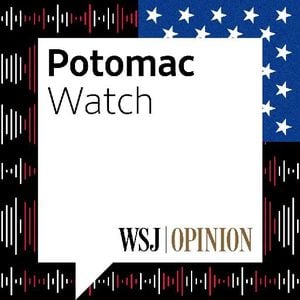A mysterious illness, referred to as "Disease X," has prompted concerns among health officials as it ravages the Democratic Republic of Congo (DRC), taking the lives of dozens and leaving many more severely ill. Since early October, the outbreak, concentrated around the southwestern province of Kwango, has raised alarm bells internationally. Current reports suggest the illness has wounded approximately 406 individuals and led to the deaths of at least 31 people, with numbers speculating to rise as investigations proceed.
The World Health Organization (WHO) has dispatched experts to the region to investigate the origins and impacts of this unexpected outbreak, which has particularly struck down children under the age of five. Health officials have noted the glaring need for swift action and clearer disease surveillance systems to mitigate such crises, especially now as the rainy season exacerbates the situation by fostering the spread of malaria and other infectious diseases.
The DRC's Ministry of Public Health initially alerted the WHO about the troubling surge of unexplained deaths on October 29. By early December, mortality rates had climbed to alarming levels, hitting 8 percent according to local health reports. The vast majority of fatalities reported have been children suffering from malnutrition, which complicates their vulnerability to any infectious disease.
Authorities struggle not only to diagnose but to manage patient care adequately due to the outbreak's rural backdrop, situated at least 435 miles from the capital, Kinshasa. Transporting specimens for laboratory testing is challenging due to unpaved roads and infrastructure issues. The WHO has indicated the absence of competent laboratories within the vicinity, heightening the risk of the undiagnosed disease spreading.
Symptoms described among patients exhibit flu-like characteristics: fever, headaches, coughs, and body aches. The health challenges include potential diagnoses of pneumonia, influenza, COVID-19, measles, and malaria, all common threats recognized by health workers. Malaria's frequent incidence during the rainy season puts additional strain on already overburdened health systems.
Reports of deaths occurring outside institutional settings are another key point of concern. Local health officials revealed some victims were not able to receive treatment due to the geographical isolation of the Panzi region, making accurate data collection nearly impossible. Even with medical facilities, limited staffing and the prevalent distribution of care lead to missed diagnoses and unreported cases.
The complications do not stop there. Weather conditions, combined with potential armed attacks from local militant groups, present barriers to the already critically limited healthcare resources. Experts are concerned about the potential for cross-border transmission due to the proximity of Angola, where public health measures may be insufficient to halt the spread of infectious diseases.
The WHO has recognized the urgent requirement for community assessments and illness surveillance to determine the breadth of Disease X’s impact. Conversations among health specialists focus on the need for rapid response teams to comb through communities to identify cases actively, especially since the outbreak may have airborne transmission possibilities. Currently, the organization assesses the global risk of Disease X as low, justifying the need for strong caution moving forward.
What's more concerning is the broader picture of how diseases like this often go unmonitored and how funding limitations for health systems have held back responses to outbreaks. Comprehensive disease surveillance is frequently hampered due to resource shortages, with healthcare systems emergent from decades of underfunding and instability. Fatalities may not always be included in the data due to the extensive delays from the point of initial infection to diagnosis and reporting.
Professional epidemiologists assert the need for enhanced disease surveillance mechanisms, stressing how consistent monitoring can prevent outbreaks before they escalate. The WHO's Integrated Disease Surveillance and Response (IDSR) is one initiative aimed at creating streamlined reporting protocols, but as of now, their efficiency has been uneven across different regions. For areas like Kwango, the absence of reliable data may perpetuate chronic health crises.
Enhanced efforts are necessary, such as the WHO's proposed 7-1-7 Initiative, aimed at rapid detection, notification, and response strategies for infectious diseases to streamline processes and initiate faster interventions. Barely skimming the surface, though, experts note these efforts hinge on stable healthcare infrastructure, which remains piecemeal at best.
The distant potential of diagnosing rarer pathogens calls for international collaboration. Laboratories equipped for specialized tests, such as genetic sequencing, struggle with unique samples from outbreaks like this, as controversies around equitable sharing complicate the submission of biological specimens across borders. Yet without this collaboration, there lies the risk of diseases continuing their unchecked spread.
While the precise origins and causes of Disease X remain uncertain, public health experts recognize its emergence as symptomatic of larger systemic issues within healthcare systems across the DRC and similar regions. Without significant investment and structural support for health services, comparable outbreaks could threaten the lives of even more vulnerable populations.
Delays between infection, diagnosis, and subsequent reporting implicate not only the health authorities but bring to light the dire need for improved communication and health system responses. Countries like DRC showcase the immense need for vigilance and operational reforms, empowering communities toward self-sustainability against such threats.
It remains clear: Disease X highlights the importance of preemptive and responsive healthcare systems capable of identifying and treating diseases before they lead to widespread devastation. International support and infrastructure improvements are necessary steps for mitigating substantial health risks, particularly for marginalized groups already suffering from historical healthcare neglect.



